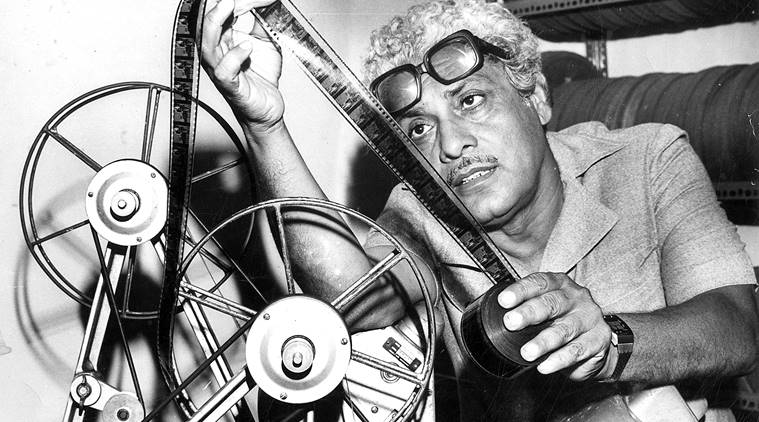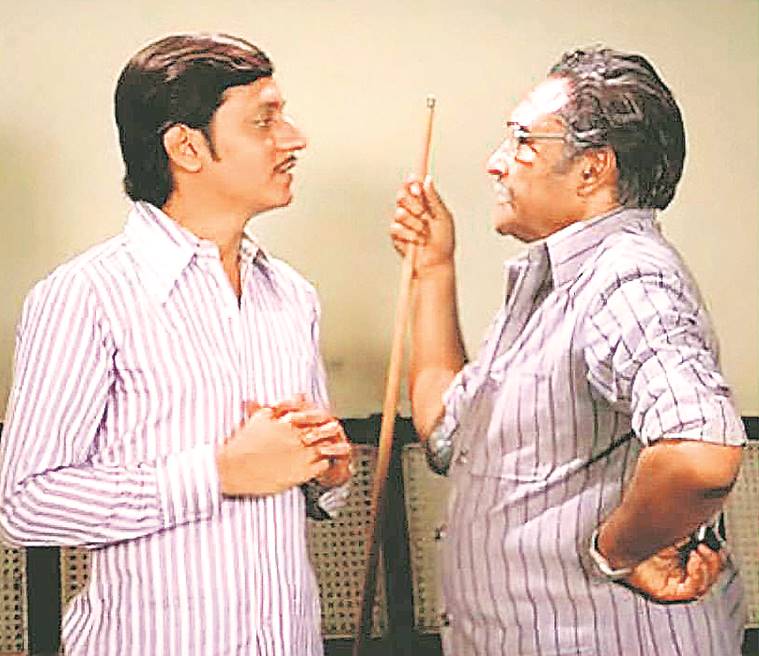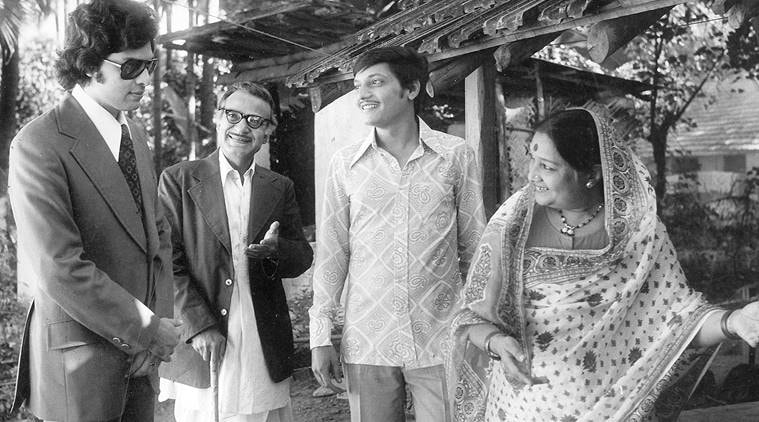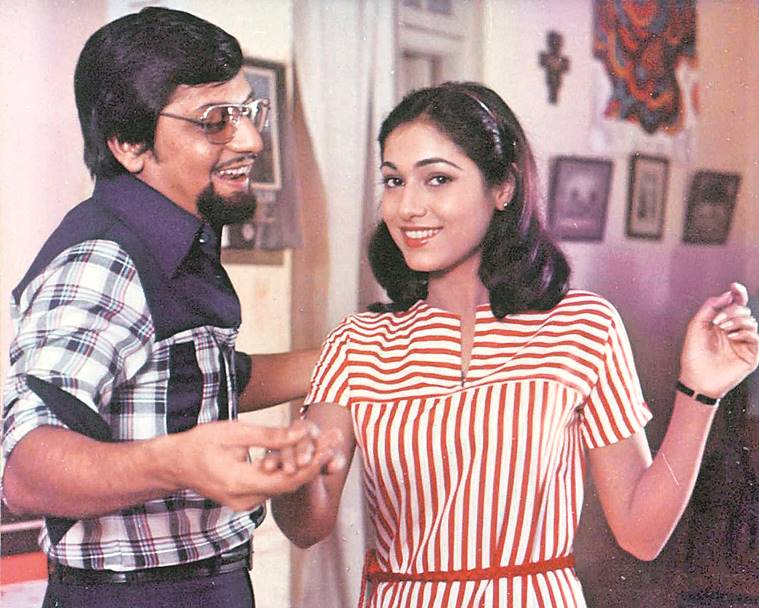 Film Director Basu Chatterjee. Express archive photo
Film Director Basu Chatterjee. Express archive photo
Would you like to change your name, Amol? Like say ‘Anmol Kumar’?” Basuda (Basu Chatterjee) had asked me immediately after Rajnigandha (1974) was ready for a release. He was taking the film to various distributors, who were not ready to take the risk of distributing a film with unknown newcomers. Till then, V Shantaram, C Ramchandra and Master Bhagwan were among the few leading Marathi/ Maharashtrian names in the film industry. Probably to survive the north Indian onslaught of Kapoors and Kumars, they had felt compelled to change their original names — Vanakudre, Chitalkar and Bhagwan Abhaji Palav, respectively.
 Amol Palekar and Ashok Kumar in Chhoti Si Baat.
Amol Palekar and Ashok Kumar in Chhoti Si Baat.
My flat refusal to change my name was not surprising to Basuda though. He was introduced to my stubbornness right in our first interaction when he had approached me with Piya ka Ghar (1972). I would have loved to accept the offer but he asked me to meet the producer first. Somehow, the image of me holding a begging bowl in front of a producer was disturbing to me. I refused to meet Mr Barjatya, and, of course, I lost the film.
Despite my mulishness, Basuda approached me with Rajnigandha just a year later. I was very eager to hear the story and Basuda began the narration. But just after the introductory lines, he handed over a book and asked me to read a short story by Mannu Bhandari. I was incapable of extrapolating the cinematic elements from those one-and-a-half pages. Even then I said yes to him because I loved the simplicity in the story.
 A still from Rajnigandha
A still from Rajnigandha
My co-actors, Vidya Sinha and Dinesh Thakur, were new entrants as well. But Dinesh and I at least had a theatre background. Vidya was oblivious to acting. He never showed us how to perform, so Vidya had a hard time. Basuda asked me to rehearse the scenes with her. Even later, during Chitchor (1976), he asked me to share the hotel room with Vijendra Ghadge, specifically so that he could rehearse his scenes with me. His subtle smile after the okay shot used to be a pat on the back.
 Vijayendra, A. K. Hangal, Amol Palekar and Dina Pathak in Chitchor. Express archive photo
Vijayendra, A. K. Hangal, Amol Palekar and Dina Pathak in Chitchor. Express archive photo
His fondness for me percolated right from the beginning. In Bombay, Basuda, through the Film Society movement, had exposed me to many foreign films. Thus, my bond with him started even before we started working together. He was a man of few words. He used to work on his scripts constantly. I used to be very charmed by his down-to-earth, non-filmi personality. I don’t recall a single incident when I had an argument with him, which is simply to his credit.
 Stills from Baton Baton Mein
Stills from Baton Baton Mein
Someone asked me once who I liked to work with more, Basuda or Hrishida (Hrishikesh Mukherjee). It was not an easy question. I did six films with Basuda and five with Hrishida. I adored both equally; I loved their styles equally. With a lot of dissection, now in hindsight, I can say that I loved to work with Hrishida more because he was very warm and affectionate; I liked Hrishida’s films more because those were wholesome films with high emotional quotient. His films were technically better than Basuda’s films. Having said that, I feel that Basuda’s narrative style was more authentic and consistently devoid of any set cinematic calculations. He would shy away from melodrama or theatrical twists and turns in his screenplay. His cinematic treatment was simple yet not simplistic. His humour was pure, sans any adulteration. His characters were vulnerable yet infallible. They had a moral graph yet there was no attempt to be judgmental.
I, as a director, am more influenced by Basuda. His obsession to shoot on actual locations and not on studio sets influenced me deeply, so much so that I never shot my films on sets except some portions of Paheli (2005). His discipline to have a bound script with dialogues ready before the commencement of the actual shooting was yet another practice I always followed.
 Chatterjee’s leading ladies (from left) Zarina Wahab, Bindiya Goswami and Vidya Sinha
Chatterjee’s leading ladies (from left) Zarina Wahab, Bindiya Goswami and Vidya Sinha
A few years ago, I visited Basuda and surprised him (with me were Zarina Wahab, Bindiya Goswami and Vidya Sinha). He was ecstatic to meet all of us together. Sandhya, my wife, blessed us with a memorable picture of those moments. Despite his frail body, we could feel his sparkling soul.
While climbing down the staircase of his house, I felt deeply sad, though. I always felt that the film industry didn’t give him due recognition for his everlasting contribution. If we see the prevalent herd of self-proclaimed dazzlers with their Padma achievements, Basuda stands out as a loner, withered away in the horizon. This is our cumulative failure. But his work is immortal, which no one can ever snatch away from him. Time and again, when we see yet another failed comedy film, the greatness of Basuda’s films gets reconfirmed.
Basuda, now that you have left us, the lines lingering in my mind are:
Salaam Basuda, from a boy-next-door.